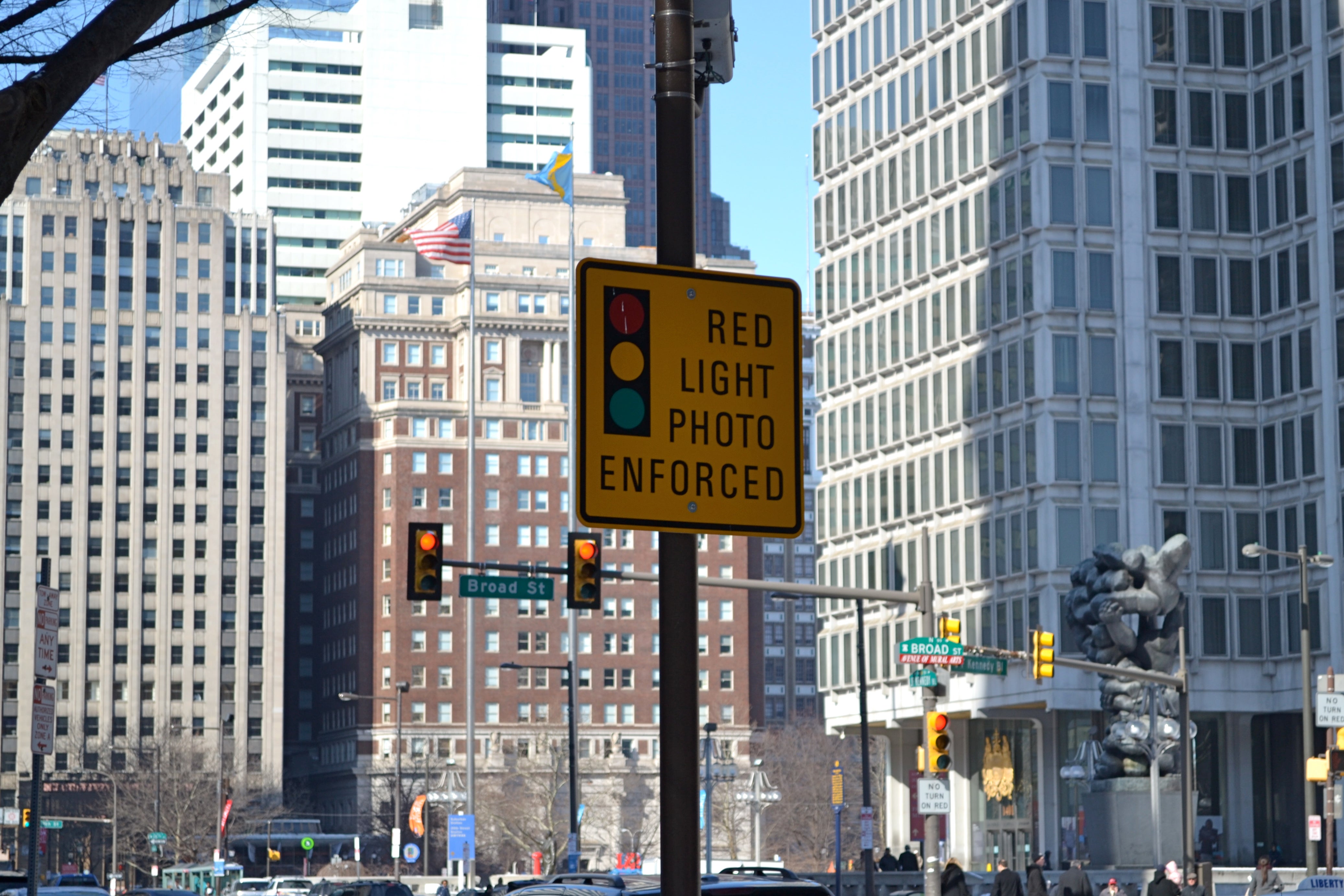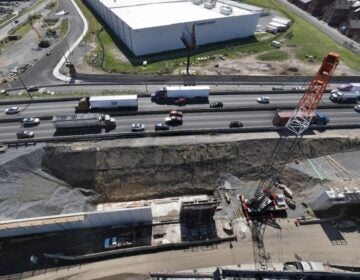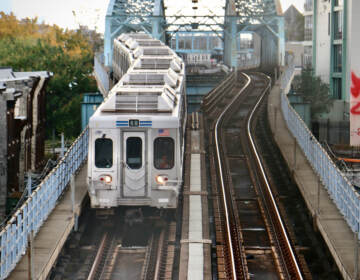Governor Wolf announces traffic safety grants using red light camera ticket funds

Earlier this week, Governor Tom Wolf announced the 6th round of Automated Red Light Enforcement (ARLE) funds: $5.5 million to 18 municipalities for 23 transportation enhancement projects.
Philadelphia received $2.8 million of those funds, which it will use on five projects, bringing the city’s grand total under the ARLE program to just under $23 million.
Of the five Philadelphia projects funded through this round, three are related to an ongoing initiative by the Streets Department and the Office of Transportation and Infrastructure Systems (OTIS) to build a “smart” transportation system in Philadelphia, said Acting Streets Commissioner Mike Carroll. Those projects, totaling $1.275 million, will install fiber optic connections to the city’s traffic signals, to connect them to both the city’s and PennDOT’s traffic management centers and upgrade traffic management software. As the smart traffic signal network grows, the city will be able to remotely control traffic signals, adjusting timing to current traffic conditions—think longer green lights leaving the stadiums after a Phillies game, or to account for detours around construction—to improve flow.
Carroll emphasized that the improved traffic flows made possible by smart traffic signals could effectively increase a street’s total capacity. In other words, with the same number of lanes, it could handle more vehicles per hour than before. That flexibility could make it possible to implement other streetscape enhancements, such as improved crosswalks or bike lanes to improve pedestrian and cyclist safety, without sacrificing automotive flow. Of course, such enhancements can already be made without reducing automobile numbers, as traffic counts on Pine and Spruce Streets have demonstrated.
The other two ARLE projects in Philadelphia will get $1.525 million for safety improvements: $525,000 for new LED street lights and $1 million for 30 to 50 traffic calming projects. The traffic calming projects will include a wide range of low cost interventions, noted Gus Scheerbaum, the ARLE coordinator at OTIS. Over the past few years, the city has used $4 million in ARLE funds for pavement markings, improved signs, speed cushions, signal improvements, and other minor improvements at hundreds of intersections.
In addition to being more energy efficient, LED lights are simply better than the old pressurized sodium lights, said Scheerbaum. “LED street lights allow a lot more clarity in someone’s perception of what they’re seeing at night,” said Scheerbaum.
According to PennDOT, the ARLE program has distributed a statewide total of $45.4 million since 2010. Currently the ARLE program is funded entirely by Philadelphia’s 122 red light cameras located in 28 locations across the city and administered by the Philadelphia Parking Authority (PPA). Since 2010, PPA red light camera revenues have totaled $82 million before expenses.
A 2012 amendment to the red light camera law authorized a 29 municipalities in addition to Philadelphia to install red light cameras, but so far only Abington Township in Montgomery County has. In Abington, the red light camera program costs more to operate than it makes, so it does not contribute funds to the ARLE transportation enhancement fund.
ARLE applications are reviewed by a eight-person panel with four members from PennDOT and four from Philadelphia. The ARLE law emphasizes that municipalities that operate red light cameras should receive priority over those that don’t.
Setting aside revenues, red light cameras have a mixed record as a traffic safety intervention: research shows that cameras tend to reduce right angle crashes at intersections (the t-bone crashes caused by a car running a red light), but increase the number of rear end collisions. In Philadelphia, red light cameras have significantly reduced violations, according to a Texas Transportation Institute (TTI) research review. The TTI paper emphasized that red light camera deployment was most effective when incidents of red light violations, and appurtenant t-bone crashes, were highest. Elsewhere, the negative side effects—more rear end collisions—may outweigh the benefits.
ARLE funds can only be used for traffic enhancements such as new traffic signals, new lights, or intersection improvements. Maintenance projects, such as resurfacing or filling potholes, are not eligible.
WHYY is your source for fact-based, in-depth journalism and information. As a nonprofit organization, we rely on financial support from readers like you. Please give today.






